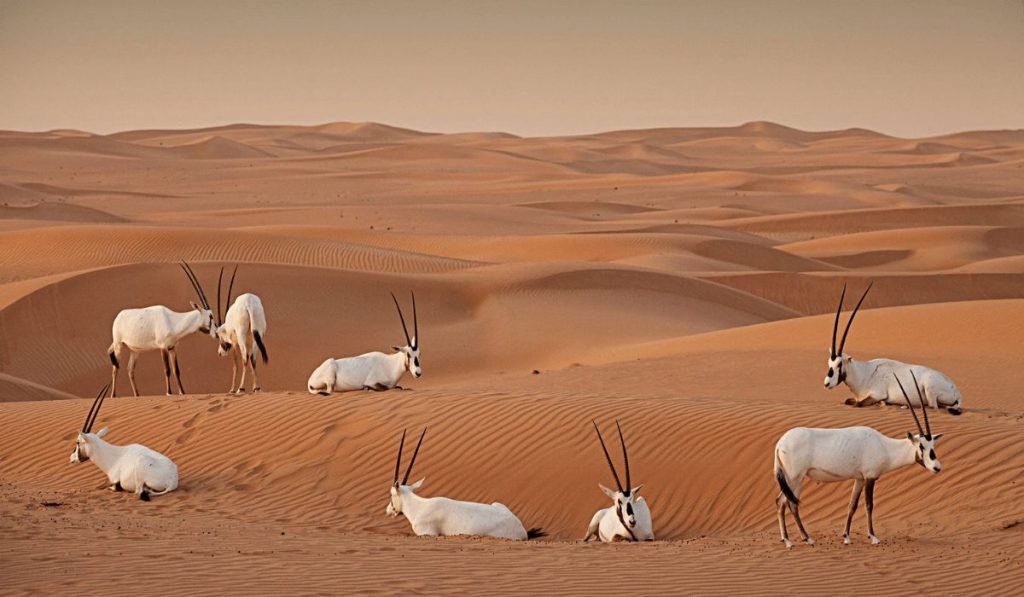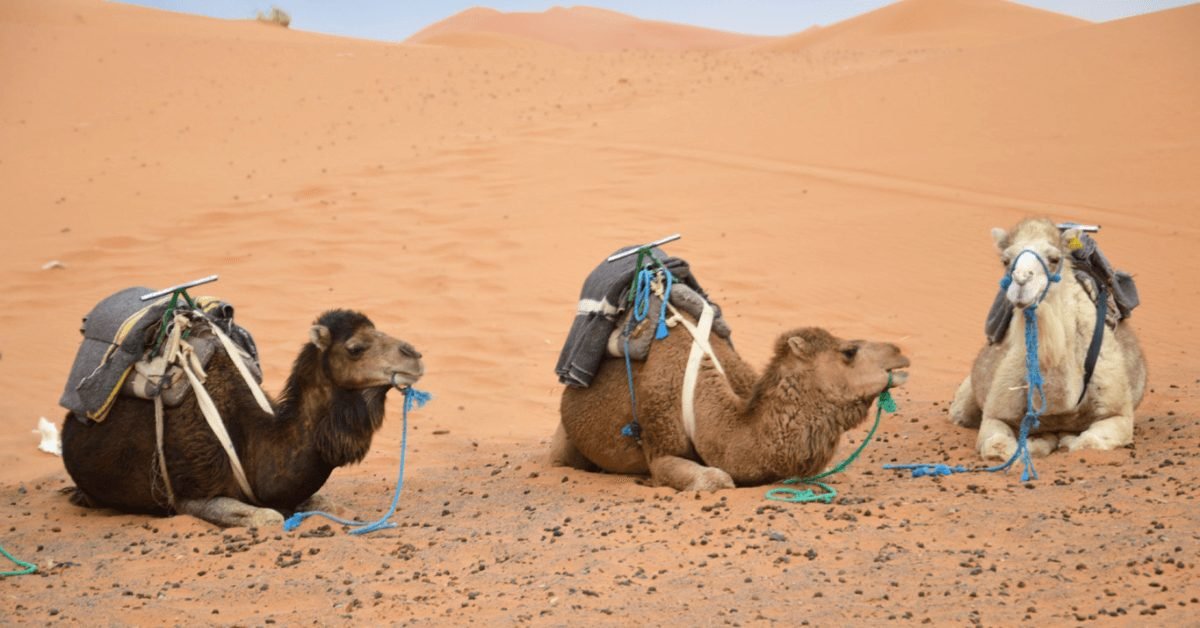Deserts are often seen as barren and inhospitable places, but they are home to a remarkable array of plant and animal life. Nowhere is this more evident than in the Dubai Desert, where the unique combination of extreme temperatures and arid conditions has given rise to a diverse ecosystem. In this article, we will take a closer look at the desert flora and fauna found during a Dubai Desert Safari, shedding light on the adaptations that enable these organisms to thrive in such a harsh environmentThe Dubai Desert Safari is a popular tourist attraction that offers visitors the opportunity to explore the vast expanse of the desert. It provides a unique glimpse into the fascinating world of desert flora and fauna. As we venture into this arid landscape, we are greeted by an ecosystem teeming with life, where plants and animals have evolved remarkable strategies to survive.
Desert Ecosystem

Desert ecosystems are characterized by their extreme temperatures, limited rainfall, and sparse vegetation. These conditions pose significant challenges for life to flourish. However, through adaptation and resilience, desert organisms have found innovative ways to cope with the harsh environment.
Adaptations of Plants and Animals
Plants in the desert have evolved various adaptations to conserve water and withstand extreme heat. They often have deep root systems to access underground water sources and reduce water loss through evaporation. Some plants have developed succulent leaves or stems that store water during dry periods. Additionally, many desert plants have waxy coatings or tiny hairs on their leaves to reduce water loss through transpiration.

Similarly, desert animals have evolved unique physiological and behavioral adaptations. They often possess specialized mechanisms to conserve water, such as concentrated urine and the ability to extract moisture from the food they consume. Many desert animals are nocturnal, minimizing their exposure to the scorching sun during the day. Some animals have developed the ability to survive for long periods without water, relying on metabolic adaptations and efficient water use.
Flora of the Dubai Desert
The Dubai Desert is home to a diverse range of plant species, each with its own set of adaptations to survive in the arid environment. Among the prominent desert plants are the Arabian cotton plant, desert hyacinth, and the half tree. These plants have evolved to withstand harsh desert conditions by reducing water loss, storing water, and tolerating high temperatures. The Arabian cotton plant, for example, has small, thick leaves covered in fine hairs to minimize water loss through transpiration. The desert hyacinth has long roots that reach deep into the ground to access water sources, while the half tree has a deep taproot that allows it to survive in arid soil.
Fauna of the Dubai Desert
The Dubai Desert is also home to a diverse array of wildlife, showcasing the adaptability and resilience of desert animals. From the iconic Arabian oryx to the elusive sand gazelle, these animals have developed unique strategies to survive in the desert. The Arabian oryx, known for its distinctive long horns, has adapted to desert life by efficiently conserving water and tolerating high temperatures. The sand gazelle, on the other hand, has evolved to be agile and swift, allowing it to navigate the challenging desert terrain.

Other desert inhabitants include the desert fox, sand viper, and various bird species like the lappet-faced vulture and the houbara bustard. These animals have adapted to harsh conditions by developing specialized features such as heat tolerance, water conservation mechanisms, and camouflage to blend in with the desert landscape.
Importance of Desert Flora and Fauna
Desert flora and fauna play a crucial role in maintaining the delicate balance of desert ecosystems and contribute to global biodiversity. They are essential for pollination, seed dispersal, and nutrient cycling, which are vital processes for the survival and regeneration of desert plants. Additionally, desert organisms provide a food source for predators, ensuring a healthy and functioning food chain.
The conservation of desert ecosystems is not only important for preserving biodiversity but also for the ecosystem services they provide. Desert plants, for example, have medicinal properties and are often used in traditional medicine. Protecting these ecosystems ensures the continued availability of these valuable resources.
Conservation Efforts
Recognizing the importance of desert flora and fauna, conservation efforts have been implemented to protect these unique ecosystems. In Dubai, various initiatives focus on preserving desert habitats, mitigating the impact of human activities, and raising awareness about the importance of sustainable practices.
One such initiative is the establishment of protected areas and nature reserves to safeguard critical habitats for desert flora and fauna. These areas serve as sanctuaries where wildlife can thrive undisturbed and provide opportunities for research and education. Additionally, efforts are being made to promote responsible tourism practices in the desert, ensuring that visitors can enjoy the beauty of the Dubai Desert while minimizing their ecological footprint.
Dubai Desert Safari
The Dubai Desert Safari offers an immersive experience for tourists to explore the vast and captivating desert landscape. It provides a unique opportunity to witness firsthand the beauty and diversity of desert flora and fauna. During a desert safari, visitors can embark on thrilling adventures like dune bashing, camel riding, and sandboarding, while also learning about the desert ecosystem and its inhabitants.

It is important to note that responsible tourism practices are crucial to minimize the impact on desert ecosystems. Tour operators and visitors alike should follow guidelines that prioritize the conservation of desert flora and fauna, such as staying on designated paths, refraining from littering, and respecting the natural habitat of wildlife.
Experiencing Desert Flora and Fauna
If you’re planning to experience the desert flora and fauna during a Dubai Desert Safari, there are several ways to maximize your encounter. Here are a few tips:
- Join guided tours: Opt for guided tours led by knowledgeable experts who can provide insights into the desert ecosystem and its inhabitants.
- Observe from a distance: When encountering wildlife, maintain a respectful distance to avoid causing stress or disturbance.
- Bring binoculars: Binoculars can help you observe birds and other wildlife from afar without intruding on their natural behavior.
- Explore different times of the day: Desert animals are often more active during the early morning or evening when temperatures are cooler. Consider scheduling your safari during these times for better wildlife sightings.
- Learn about tracks and signs: Familiarize yourself with the tracks and signs left by desert animals. This can enhance your understanding of their presence and behavior.
Remember, the desert is a delicate ecosystem, and it is our responsibility to ensure its preservation for future generations to enjoy.
Conclusion
The Dubai Desert is a fascinating landscape that showcases the incredible adaptability of desert flora and fauna. From resilient plants to uniquely adapted animals, the desert ecosystem is a testament to nature’s ingenuity. By understanding and appreciating the intricacies of this ecosystem, we can work towards its conservation and sustainable management. The Dubai Desert Safari provides a valuable opportunity for visitors to witness the beauty of desert flora and fauna while promoting responsible tourism practices.

